HTC One max Review - It's Huge
by Brian Klug on October 28, 2013 10:00 AM EST- Posted in
- Smartphones
- HTC
- Mobile
- One
- Snapdragon 600
- Android 4.3
- One max
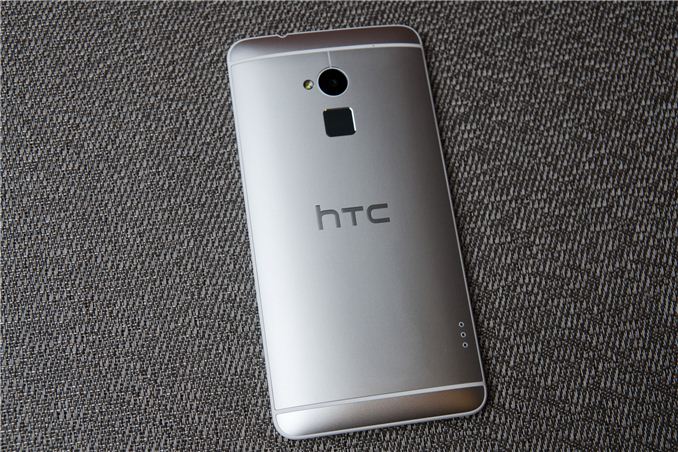
Big phones are all the rage right now. Although tablets promised the kind of extra screen real estate that would increase productivity while still retaining portability, there’s ultimately nothing more likely to be on your person than a phone. I wager that at least some of the success of the supersized smartphone form factor is still that a phone is ultimately always on your person, while a tablet still isn’t.
Today we’re looking at HTC’s newest member of its flagship One series, and its largest, the aptly named One max. Although HTC has been no stranger to larger display form factors (remember how big the HD2 seemed back in 2009?), the One max is to my knowledge the largest smartphone HTC has ever made, eclipsed only by the short lived HTC Flyer and Jetstream tablets. In the HTC phone portfolio, it’s easily the largest smartphone they’ve ever made, and that’s noteworthy.
The strategy for HTC’s One lineup seems to have been a simple one, differentiated by display size and form factor. We saw the flagship, dare I say midsized HTC One come first, then the smaller, lower end HTC One mini, and finally the huge HTC One max.
At a high level this strategy is pretty basic - offer three form factor options that yield almost the same experience. All three are predominately metal and share roughly the same industrial design notes, featuring an aluminum backside with top and bottom notches for antennas, center mounted camera, and LED flash. On the front, big stereo speaker grilles at the top and bottom, and the same button arrangement, just back and home.
I never had a problem locating the power button on the One, but then again I apparently have longer fingers than most. The power button moves down below the volume rocker on the One max, which does make sense since using your thumb to actuate power naturally positions your index finger right next to the fingerprint scanner.
I have no complaints about the buttons on the One max, they seem different somehow but still are communicative and don’t rattle around.
Up top there’s the headphone jack and IR port, which is slightly recessed. It isn’t the power button this time, just an IR window.
| HTC One mini | HTC One | HTC One max | |
| Height | 132 mm | 137 mm | 164.5 mm |
| Width | 63.2 mm | 68 mm | 82.5 mm |
| Thickness | 9.25 mm | 9.3 mm | 10.29 mm |
| Mass | 122 grams | 143 grams | 217 grams |
| Display Size | 4.3-inch | 4.7-inch | 5.9-inch |
| Display Resolution | 1280 x 720 | 1920 x 1080 | 1920 x 1080 |
| SoC |
1.4 GHz Snapdragon 400 (4x Krait 200) |
1.7 GHz Snapdragon 600 (4x Krait 300) |
1.7 GHz Snapdragon 600 (4x Krait 300) |
| Camera | 4 MP F/2.0 Ultrapixel with LED | 4 MP F/2.0 Ultrapixel with OIS and LED | 4 MP F/2.0 Ultrapixel with LED |
| Battery | 1800 mAh, 3.8V, 6.84 Whr | 2300 mAh, 3.8V, 8.74 Whr | 3300 mAh, 3.8V, 12.54 Whr |
| WiFi | 802.11a/b/g/n | 802.11a/b/g/n/ac | 802.11a/b/g/n/ac |
| Storage | 16 GB NAND | 32 GB NAND | 32 GB NAND + microSD |
If the dynamic range in size between the One mini and One is a 2 on an arbitrary scale of 1–10, the dynamic range between the One and One max is at least a 9. While the One mini really isn’t that much smaller than the normal One, the One max lives up to its namesake in a dramatic fashion. It’s positively huge, it literally is the One design taken to the max. The One max makes the Note 3 feel almost normal by comparison, and the entire normal sized 5-inch smartphone demographic feel downright small.
The One max is definitely a two-hand device, one handing it is difficult if not impossible, although I doubt that was anyone’s goal for this thing. It’s big in 2D dimensions, and it’s also somewhat heavy, at 217 grams, but I guess that’s expected given the material choices.
What’s interesting about the One max is that the truth is that its design is a lot more like a vastly larger One mini than it is the original One. We saw the mini come after the One and bring a plastic lip rather than the gorgeous diamond-machined edge that the One had, partly for cost reasons, partly for survivability when dropped on a hard surface. Truth be told, I can understand the rationale for having a plastic ring around the device and it making drops and blemishes a bit less destructive. I filed my HTC One down after a drop to my tile floor dented the chamfered edge a bit. The tradeoff however is that you’re now touching more plastic than metal.
I was initially turned off by the glossy plastic ring around the One mini, but if that was what had to take a hit to make the One mini the right price point for HTC to sell into operators and still make money, I was willing to deal with it. I’ll leave discussion of the faux-metal plastic speaker grille on the One mini for another day, which thankfully the One max doesn’t have.
Anyhow the One max inherits the same plastic ring around the edge design that the One mini debuted with. The polymer has been changed slightly, it’s a more matte, grittier finish that makes it a bit grippier and less chintzy feeling than the One mini’s slippery, glossy finish. The One max also includes aluminum speaker grilles, not the faux-metal plastic cutouts that adorn the One mini.
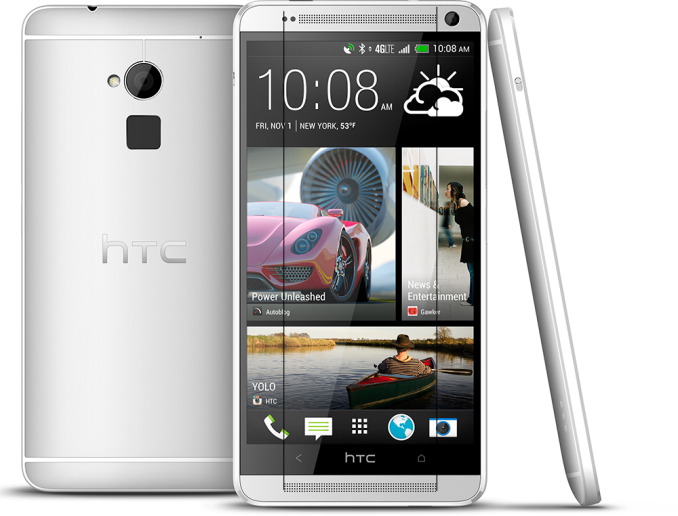
Now you also won't be able to unsee it (lines added to show asymmetry)
Let’s talk about the speaker grilles for a moment. What I loved about the original One design was how balanced everything felt. The polymer strips required for the antenna array carried over to the front and felt logical, it seemed like each cut had a purpose. On the One max however, I can’t get over how the speaker grille dots aren’t lined up and symmetrical at top. Something bugged me about the One max’s appearance for a few days until I noticed exactly what didn’t seem balanced anymore, so there’s that. I hesitate to make a big deal about it, but it might be a microcosm of what’s really weird about the One max.
The One max also takes a nod from a few of the Asian variants of HTC One which featured a removable back to accommodate two SIMs (when necessary) and a microSD card slot. The One max makes the removable back and microSD card slot standard, in addition to eschewing a SIM tray and enabling design commonality when dual SIM is necessary. What it doesn’t add is a removable battery, since HTC continues its use of a pyramid-like stack of display, battery, and PCB. Peel up the label and you’ll find out you’re looking at the top of some EMI cans and shielding rather than a battery, validating that. At the bottom of the HTC One max there’s no longer a Beats Audio silkscreen (since that partnership is over), instead just blank empty space. The nice thing about having the removable door is that the regulatory markings are on the inside, there’s no laser etched part and model text on the bottom third of the One max.
There’s a small slider on the left side of the One max which pops the removable door open, it then hinges and comes off completely.
There’s definitely a tradeoff associated with this approach though. For starters, although there isn’t much flex or play in the door after it’s attached, it requires a lot of effort to make sure the door is completely seated when re-attached. In addition there’s definitely a gap at top and bottom, which is unfortunate given HTC’s narrative about zerogap construction for the original One.
The only caveat is that the One max myself and a few others were sampled was in fact a PVT (Production Validation Test) as marked, so it’s possible the door is being slightly tweaked, but I doubt it’ll change much. I’ve said my part already on microSD cards and the fact that they’re going the way of the dodo in smartphones, I just don’t need one anymore, and definitely not at the expense of build quality. It is convenient not having to use a SIM ejector tool though, even if I carry one around all the time anyways. For the incredibly small percentage of users that clamors for an SD card every single smartphone launch, it’s at least one point which won’t be belabored so tiresomely this time.
In a lot of ways the construction of the One max is more like the One mini, and I fear that comes hand in hand with making what was an expensive design (the One) profitable, something HTC does need. It still is premium and combines metal and plastic in a pleasing way, but there clearly were tradeoffs on the road to the One max.
The One max isn’t so much a phablet as it is a huge phone. I don’t know if the supersized phone market is quite mature enough to really tell what the defining properties for a phablet are yet, but the scaled up One design makes the One max feel like a huge phone. HTC doesn’t go for an active digitizer and slide-out stylus with the One max, there’s an optional capacitive stylus that’s a standalone accessory, and the scribble application I’ll get to in a bit. I don’t think there’s anything wrong with that approach quite honestly (I wager not many Note users actually use the stylus), it’s just something to note.
HTC Power Flip Case
HTC also sampled their new battery case, which is like the flip case we saw for the One but includes a battery in the screen cover portion. Think the Surface’s new Power Cover, but for the HTC One max. The power flip case uses three pogo pins to connect the battery directly to the One max, it’s what the pogo pads on the back of the phone are for. The case snaps on around the perimeter of the One max, and the front portion folds over the display, just like the flip case. The units we were sampled weren’t final however, and had some issues with proper fit, although fit should be rectified in the final version.
The battery isn’t huge, at 1210 mAh and 3.75V (4.53 watt-hours), but it does give a boost as I’ll show in the battery section. It also does add weight what is already an unmistakably heavy phone, and makes using the fingerprint scanner a bit more awkward.
When the power flip case is attached you get a small plus sign on the battery symbol in the status bar. I’m not sure how this actually works in practice, as the One max seems to draw from both the internal battery and the external battery at the same time, rather than using the external battery to charge the internal one. It does boost battery life however.


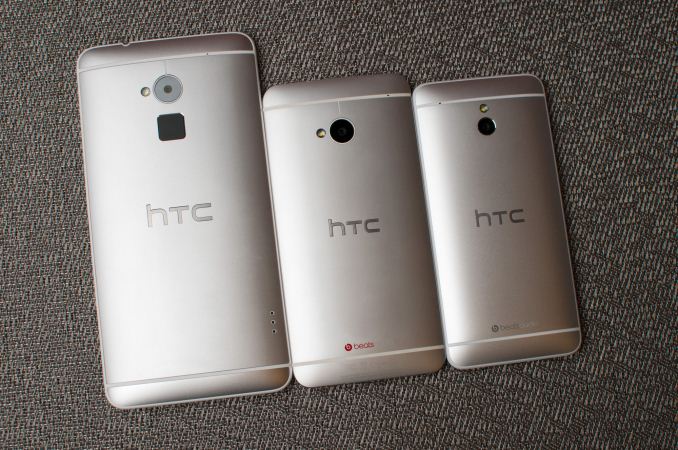
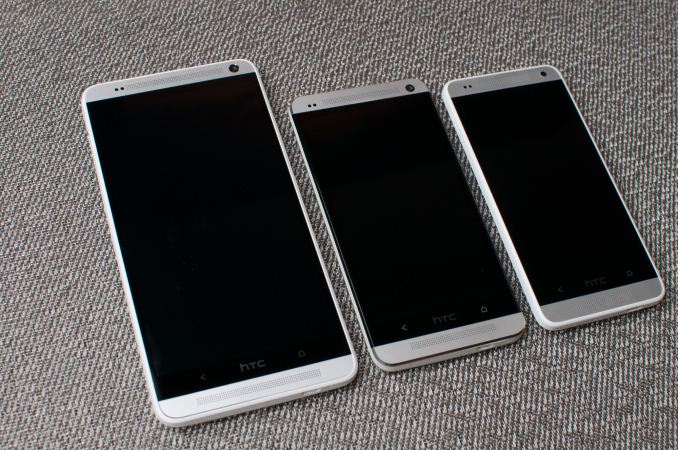
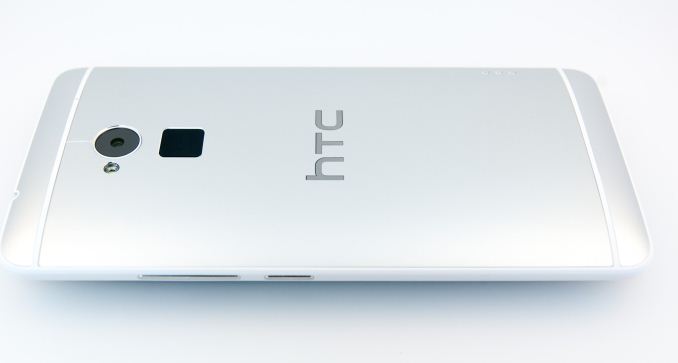
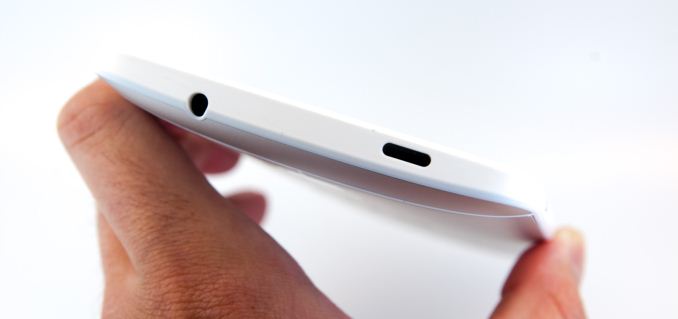
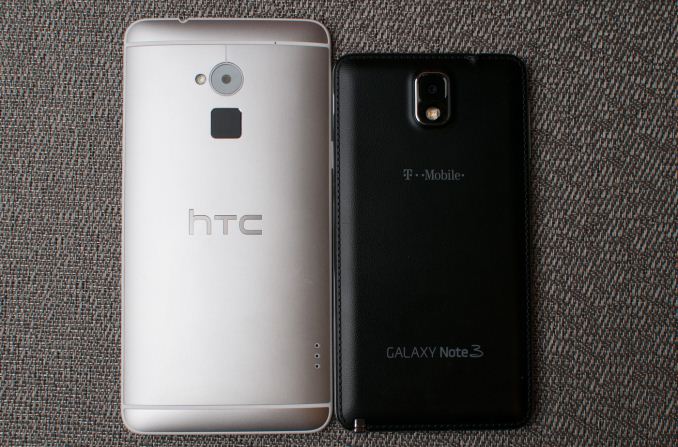
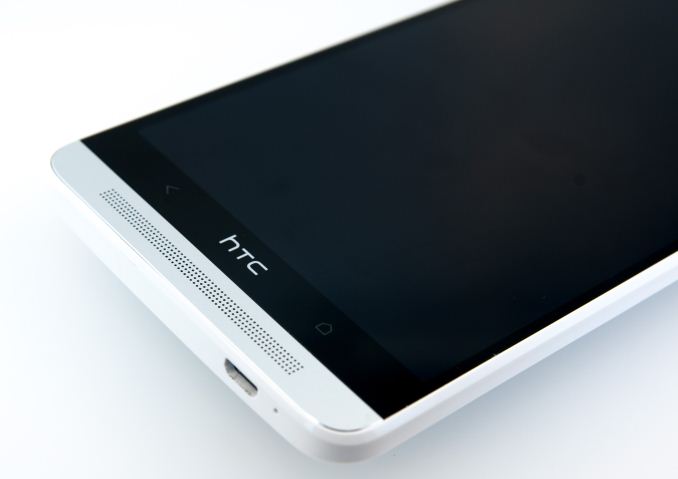


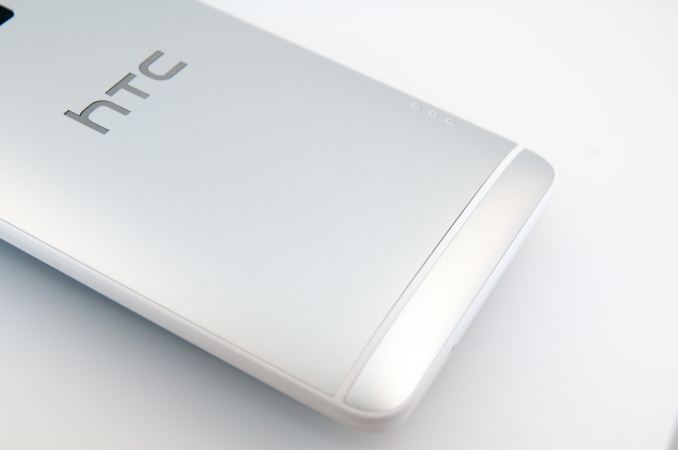
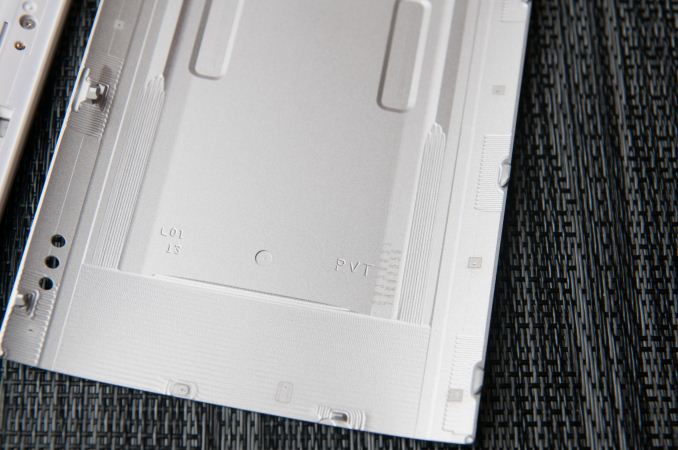






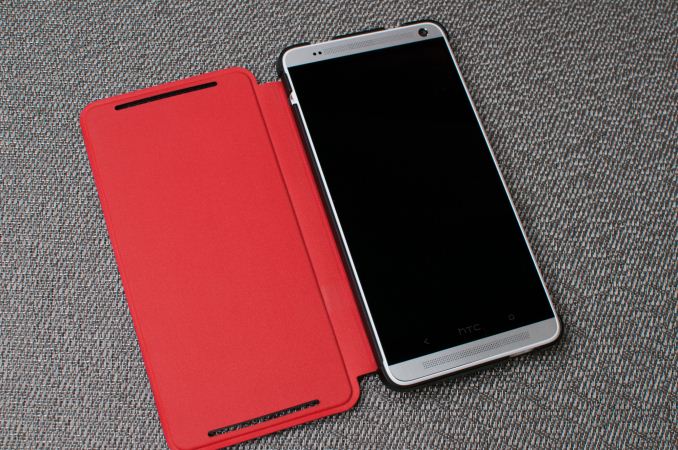
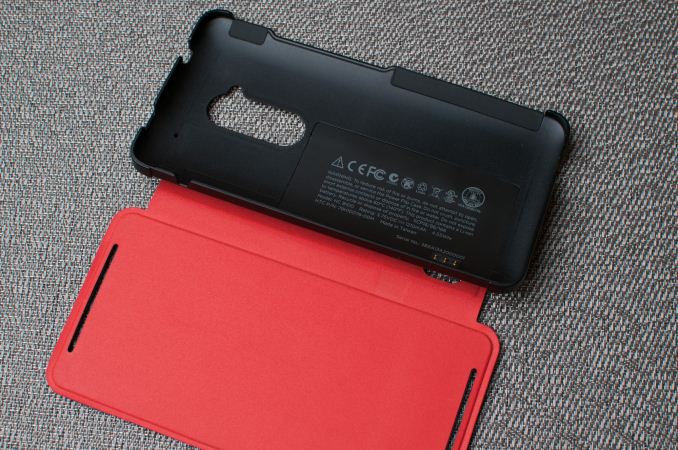








197 Comments
View All Comments
rabidkevin - Tuesday, October 29, 2013 - link
What you are missing is that OEM's want internal only storage to CONTROL THE MARKET! Charging premiums on space for outrageous amounts. It has nothing to do with user demand. Why would anyone turn down 32gb of extra space for 30 bucks?I still have a galaxy s2 that I just FINALLY paid off after 2 years. I'm not ready to make payments for 2 more years when I have a perfectly good working phone in my hand.
Black Obsidian - Tuesday, October 29, 2013 - link
You're rabid alright, Kevin.The vast majority of users don't want expandable storage, because the vast majority of users aren't using all of the storage in their (overwhelmingly base-model-storage) phones as it is. Why is this? Well, because the vast majority of users aren't carrying 1,000+ hours of music around with them at all times. Hell, I'd be shocked if the majority of users even HAVE 16GB of music in the first place!
Us geeks aren't the whole smartphone market. Pre-iPhone, we absolutely were. Now? To say we even account for 5% of the overall market would be overly generous, probably by a factor of 10. We're a tiny, TINY fraction of the market, and even then, only *some* of us care about removable storage.
The OEMs might enjoy milking people by charging them $100 for each $20 increment of flash, but relatively few people are bothering to pony up for 32 or 64GB even where it is an option. If you combined all the people who actually use expandable SD *and* all the people who upgrade from base 16GB devices with no expansion, I doubt you'd reach even 10% of the market. Or 5%, for that matter.
(relatively speaking) Nobody cares.
Klug4Pres - Tuesday, October 29, 2013 - link
Brian, some people want removeable SD cards, and what's more the ability to use them is, objectively-speaking, a useful feature with almost no down-side (if we ignore business decisions to economise by reducing internal storage on phones with this feature, and what Google sees as the inability of users to deal with more than one storage location). If the HTC One has a particular design that would be compromised by allowing SD cards, that may be so, but there are other possible designs, and I doubt you could argue that they would be systematically inferior."Being deprecated by a platform" is not a good reason not to support them. Google obviously has a vested interest in tieing people to the Cloud, so we shouldn't care what Google thinks about this.
You have argued, persuasively, that removeable batteries do involve more of a trade-off, but again some people are more than willing to accept that trade-off because of how they wish to use their device, and because they may wish to make use of the device for longer than the expected service life of the battery.
Oh, and I'm calling flamebait on the "going the way of the dodo" comment.
Jedi2155 - Wednesday, October 30, 2013 - link
I take issue with the comment on internal batteries being bigger when sealed in versus removable. In terms of energy I have yet to see this to be true. All the galaxy phones have continued to have removable batteries yet remain in an incredibly small form factor. My Note II has nearly the same energy capacity (~3100 mAh, Note 3 ~3200 mAh), in a smaller and thinner form factor than the 3300 mAh of the HTC One max. I personally believe most of the reason for an internal battery is simply laziness in design. It simply takes a lot more engineering and design work to include a removable battery versus not. I completely believe its possible to cram a removable version of the same 3300 mAh battery in the phone with the volume they had available in this phone. I bet they could have increase the battery volume even further if they put more effort into it.My primary point is that, while going internal does offer some volumetric benefits, majority of the manufacturers do not exploit it for the simple reason that it costs more.
I'm not even going to touch the microSD comment (even while quite possibly true, many geeks and their gf's still demand it).
Steven JW FCK - Monday, October 28, 2013 - link
So what is wrong having "dumb manually managed storage?"It sounds to me like a feature, and a feature I would happily want to have in its usefulness in being partitioned off from the rest of the phone.
And build quality? Really? The way you talk about build quality sounds more like you are interested in how pretty it looks to you and other people? Your hand is supposed to be around the phone when you use it in the first place, so most of this phones plastic surround will be invisible to you and others, so why are so fussy on wanting a pretty phone, over a feature packed phone? Would better build quality translate into better drop-ability? Not at all! That would be an absurd conclusion to blindly believe.
Dentons - Monday, October 28, 2013 - link
But Brian, you don't focus on build quality, not really. Your critique suggests an overwhelming devotion to the fashion of these devices. You're actually neglecting the underlying technology in many cases to focus instead on things one suspects most Anandtech readers could care less about. Honestly? How much time did you devote to the Gold iPhone in a recent podcast? Yes, it's gold, we get it.Carhartt jeans, Toyota Camry's, and Samsung phones all have good build quality. Louis Vuitton, Rolls Royce, and metal skinned phones are almost entirely about fashion. Not the phone's electronics of course, but the metal casing, yes, fashion. You're ignoring the actual technology in favor of focusing, and focusing, and focusing on the minutia of the exquisite metalized skins of these devices.
Metal may often be studier, but that doesn't devolve everything else to crap. That is often the conclusion to be drawn from your criticism. In point of fact, there are plastics with far better strength to weight ratios than any metal. As a technology person, I really don't care if the case is metal or plastic, so long as it's functional. Your endless rants about the greasy Samsung casings truly baffles me. One wonders if you have some sort of unusual oil factories in the palms of your hands?=.
Or just maybe, you go through so many phones that are all so similar, the small differences start to become big differences. In that light, I recommend the following XKCD comic strip: http://xkcd.com/915/ - "Connoisseur"
Brian Klug - Monday, October 28, 2013 - link
Yes I do focus on build quality in the review, and the context is still the tradeoff not being worth it in the case of the One max."neglecting the underlying technology"
What are you even talking about?
-Brian
Dentons - Monday, October 28, 2013 - link
I'm talking about the fact that you rarely, or barely give any kudos to devices with microSD and user swappable batteries. Those features aren't listed as benefits, they're hardly mentioned at all. Anandtech tests everything else, but I cannot recall the last time Anandtech tested the speed of a microSD port.Your recent review of the Note 3 was a case in point. You barely mentioned either of those features. They are real, actual hardware differentiators. For many of us, not only are they important differentiators, the absence of them is a deal breaker.
A cost conscious consumer can honestly want a device to be future proofed for a few years. We don't get new, free, phones a few times each month. Our batteries wear out. Media sizes are ever increasing. Not all of us want to rely, nor can we rely on the cloud for all our media needs. It is a waste for us to spend an extra $200 for a phone with 64GB when we're far better served with $30 in cheap SD storage. As you point out, we cannot use it for apps, it's for video and music. For those use cases, the highest quality NAND is generally wasted.
Even though you don't use those features, the best selling smart phone models in the world still have them. You spend orders of magnitude more time discussing the casings, finishes, and lustrousness of phones than either of those. So yes, in this case, you definitely are neglecting the underlying technology in favor of fashion.
On this topic, in both in your reviews and on the podcast, your attitude is one of "I know what you need better than you know what you need". That's what you're telling us. That you're the expert, and that you know best.
How would you respond to a reviewer repeatedly telling you that you really didn't need the features you used every single day? That's what you're doing. It's annoying, and insulting.
apertotes - Tuesday, October 29, 2013 - link
Well, if they did not neglect those features they would have to criticize Apple for not providing them, and that is a deadly sin.Since Apple is perfection, that is the mirror they use to analyze the rest. Things that do not exist in Apple are worthless by definition.
Dentons - Tuesday, October 29, 2013 - link
You make a relevant point, and allude to another equally important point.As you point out, by not giving kudos to phone makers who include microSD and removable batteries, they don't have to list the absence of those features as cons to the Apple and Nexus products the staff here tend to glow over.
Which leads into another key point. We all know what would happen were Brian's to neglect to mention a key, unique, hardware differentiator in the review of an Apple product. Apple or their marketing agency would contact him. They'd bitch, they'd moan, they'd complain, they may even threaten future review status.
Many reviewers know not to neglect a focus on Apple's little differentiators, but they have little compunction in reviewing 'lesser' devices with a completely different set of rules.